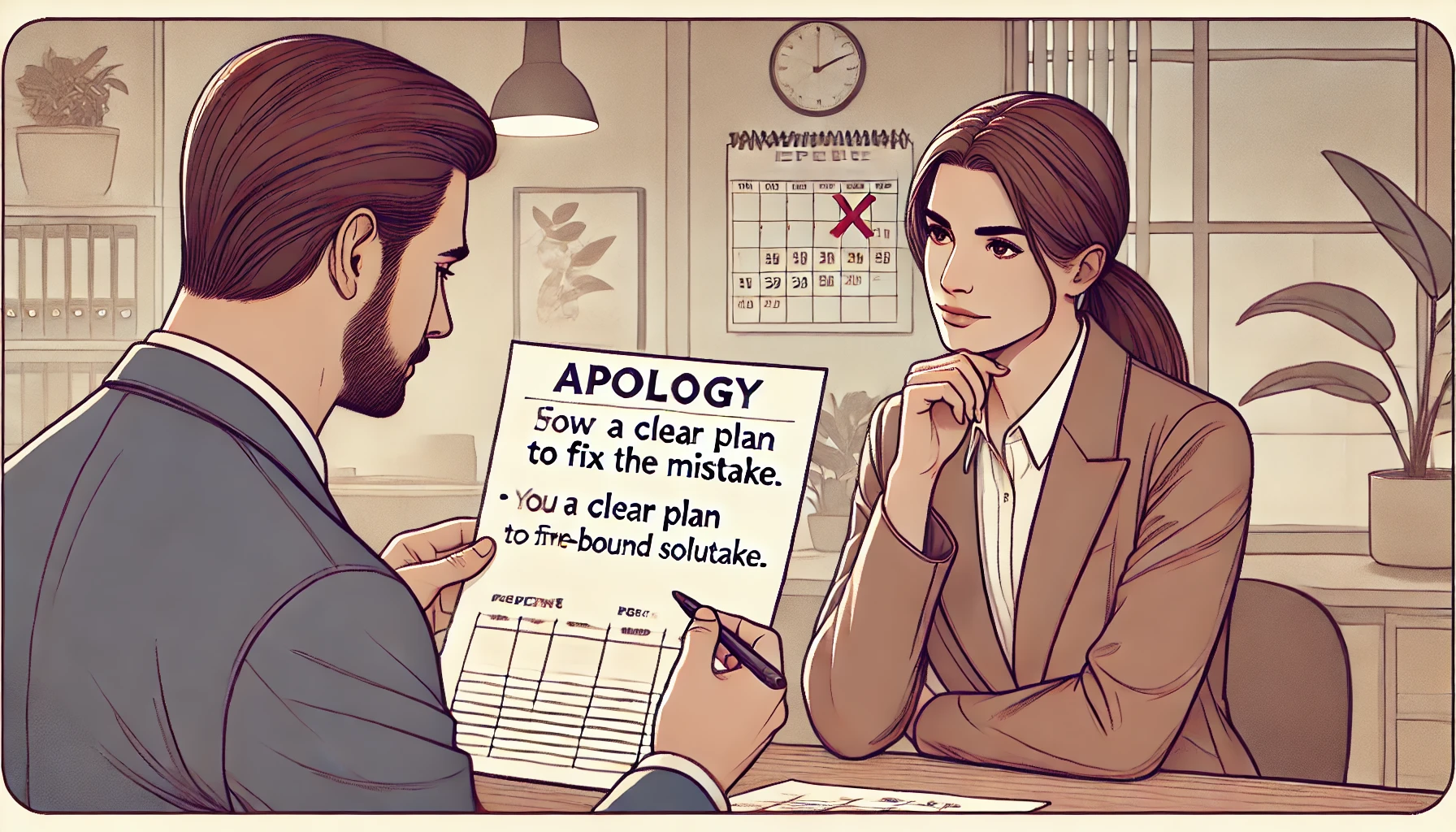Mistakes are inevitable in both personal relationships and professional settings. When they happen, an apology can be the difference between salvaging trust or further damaging credibility. But a simple “I’m sorry” rarely suffices. What truly matters is the ability to offer concrete actions to make things right. By providing a clear path to amends, you not only repair the immediate situation but also strengthen trust, elevate your reputation, and demonstrate accountability. In this guide, we’ll explore how to construct meaningful, actionable steps when offering an apology, ensuring your credibility is restored and the relationship strengthened.
Introduction: Why Offering a Path to Amends Is Essential
We’ve all been there: we make a mistake, offer an apology, yet the situation still feels unresolved. Why? Because often, a simple “I’m sorry” doesn’t address the deeper concerns. Apologizing without a plan to fix the issue leaves doubt lingering. But when you offer a clear, actionable path to make things right, you not only resolve the immediate issue but also demonstrate sincerity, accountability, and foresight. This approach can make the difference between a hollow apology and one that genuinely rebuilds trust. Let’s dive into the actionable steps you can take to ensure your apology is meaningful and lasting.
Acknowledging the Mistake Clearly
The first step toward making amends is to acknowledge the mistake, and clarity is key. Vague apologies often come across as insincere. Be specific about what went wrong, whether it was missing a deadline, causing unintentional harm, or breaking a commitment. When you’re clear about the issue, the person you’re apologizing to feels understood, which builds the foundation for trust.
For instance, instead of saying, “I’m sorry if I caused any inconvenience,” you might say:
“I realize I missed the deadline we agreed upon, and my delay added stress to the team.”
By naming the mistake directly, you signal that you fully grasp the gravity of the situation.
Showing Genuine Remorse
Once you’ve acknowledged your mistake, the next step is to express genuine remorse. This is more than a formality—it’s about creating an emotional connection and showing you understand the impact of your actions.
For example:
“I deeply regret that my delay caused frustration. I know how important this project is, and it’s been weighing on me ever since.”
This kind of statement not only expresses regret but also shows empathy. Genuine remorse reassures the other person that you care about the consequences of your actions, setting the stage for making things right.
Offering a Clear Path to Make Amends
This is where your apology transforms from words into actions. Offering specific, actionable steps gives your apology depth. You’re not just saying “sorry”—you’re demonstrating how you’ll fix the mistake and prevent it from happening again.
Step 1: Identify Specific Actions
The first action should directly address the issue at hand. Whether it’s repairing tangible damage or finding ways to make up for lost time, your proposed solution needs to be realistic and achievable.
For example:
“To make up for the missed deadline, I will dedicate extra hours over the next week to get the project back on track by [specific date]. I’ve also adjusted my schedule to ensure timely delivery.”
By laying out clear, time-bound actions, you reassure the other person that you’re not just acknowledging the mistake but actively working to correct it.
Step 2: Offer Preventative Measures
Next, outline steps that ensure the mistake doesn’t happen again. This shows you’ve thought about the long-term and are committed to preventing future errors.
For example:
“Moving forward, I’ll use a new project management system that includes automated reminders for all deadlines. This will ensure that I stay on track and don’t fall behind again.”
Offering preventative measures demonstrates accountability and thoughtfulness, showing that you’re not just fixing the immediate problem but also taking steps to protect the relationship from future issues.
Step 3: Ask for Feedback
Sometimes, the best course of action is to ask the other person how they’d like you to make things right. This shows respect for their feelings and invites them into the solution, creating a collaborative effort to resolve the issue.
For example:
“Is there anything else I can do to make this right? I want to make sure we move forward positively.”
By involving the other person in this way, you give them agency and ensure your efforts align with their expectations.
Why Offering Amends Enhances Credibility
Offering an apology that includes concrete steps does more than smooth over a bad situation—it enhances your credibility. Taking responsibility for your actions and offering a path to resolution shows you’re not only capable of growth but are also dedicated to earning back trust.
In professional settings, this kind of accountability can make a significant difference. Businesses that take clear steps to correct mistakes often retain customer loyalty because they show a commitment to service and satisfaction. Similarly, individuals who outline their plans for improvement demonstrate integrity, which strengthens personal and professional relationships alike.
Frequently Asked Questions About Offering a Path to Amends
1. How do I apologize without sounding insincere?
Be specific about your mistake, show genuine remorse, and offer concrete actions to fix the situation. Avoid vague or generic statements, and make sure your words reflect the true weight of the situation.
2. What if the person doesn’t accept my apology?
Sometimes people need time to process their feelings. If your apology is not immediately accepted, respect their emotions and give them space. You can reiterate your willingness to make amends and let them decide when they’re ready to move forward.
3. How can offering amends benefit my professional relationships?
By taking responsibility and offering clear steps to fix a mistake, you build trust and demonstrate reliability. This positions you as someone who is accountable and committed to improvement, strengthening professional relationships.
4. Is it always necessary to offer a solution after apologizing?
Yes, offering a solution shows you’re serious about making things right. Apologies without actions can come across as empty, but providing clear steps to resolve the issue adds sincerity and substance to your words.
5. What’s the difference between saying “sorry” and offering amends?
Saying “sorry” acknowledges the mistake, but offering amends goes further by providing a plan to fix the issue and prevent it from happening again. It demonstrates a higher level of responsibility and care.
Conclusion: Rebuilding Trust and Ensuring Future Success
Apologizing with a clear path to make amends is more than just a good practice—it’s essential for rebuilding trust. By acknowledging your mistake, expressing genuine remorse, and taking concrete steps to resolve the situation, you show both personal and professional growth. Following these steps will not only restore credibility but also foster stronger, more resilient relationships.
Incorporating this approach into your apologies ensures that mistakes are transformed into opportunities for improvement. Whether in business or personal matters, the best apologies are the ones that come with a roadmap for making things right—and staying on the right path moving forward.


